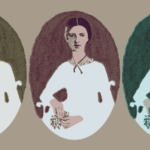I dedicated my latest novel To Jack, and for good reason.
In for a Dime is book two in the three part Tildon Chronicles and I’m almost certain that neither it nor book one, No Quarter, would have been written, much less published, if it hadn’t been for Jack David at ECW Press. In the spring of 2013 I’d just completed Cipher, my first attempt at writing a mystery novel, and prior to sending it to Jack I’d done the ubiquitous Google search trying to unearth a bit of background I could use to my advantage in a query letter. When I found an interview during which he’d stated that his reason for founding the press was “shit-disturbing” it seemed an encouraging sign given that I had long since resolved that my reason for becoming a novelist was one and the same. I sent him my query along with Cipher’s first two chapters on a Wednesday and the very next day Jack emailed me to request the full manuscript. Miraculously it seemed, he emailed me back the following Monday to tell me he’d read it over the weekend and wanted to invite me for “a chat” over lunch.
I met him and editor Michael Holmes two excruciatingly long weeks later at ECW’s office in Toronto and, after we’d settled into a booth at a pub a couple blocks away, one of the first questions Jack posed was, “So, do you have any ideas for a series of mystery books?”
Quite frankly, the books I was most eager to write were all stand-alones. I’d never even considered the prospect of writing a series, mystery or otherwise, but from the way Jack’s eyes were imploring me so expectantly I feared admitting that would be a fool’s game, at best. We hadn’t, after all, signed a contract yet. Faced with the prospect that my first real chance of becoming a published author hinged on what I said next, I lied and told him I did.
Or rather I didn’t so much as lie as fudge the truth, just a smidge.
A few years earlier I’d read Roberto Bolaño’s 2666, a book which had compelled me to start writing novels in the first place. There the reader is confronted with a mystery: Who is murdering women in the fictional maquiladora city of Santa Teresa? In “The Part About Fate”, Bolaño’s New York journalist, Oscar Fate, muses: “No one pays attention to the killings, but the secret of the world is hidden in them.” Confronted then with a mystery of such overriding imperative that no one seems inclined to solve Bolaño’s solution is to create the character of Archimboldi, an obscure writer with a personal stake in revealing the truth.
After reading 2666 I’d often mused that Canada could also use just such a writer. Over the past twenty-odd years I’d lived and worked in some of the poorest communities all across the country. Throughout my travels I’d personally witnessed, and experienced, just how endemic violence is in the lives of those of us consigned to the lowest echelons of Canadian society. Whether involving the particularly insidious, and virulent, toxic culture of abuse permeating our police services and military, or our draconian correctional system that’s more medieval than progressive, or Indigenous Peoples living in third world conditions tantamount to apartheid, or the epidemic levels of domestic and child abuse, or the white supremacist groups forming ersatz militias in every province, or the escalating rates of homelessness, toxic drug overdoses, and mental illness that continue to erode the social contract in our cities and towns, it matters not, even the most conscientious reader will find little evidence of it in our nation’s fiction. And nowhere is this “oversight” more glaring than in the ongoing tragedy of Missing and Murdered Indigenous Women and Girls which had posed a similar mystery in my mind as Bolaño did in 2666 ever since the scope of Robert Picton’s serial predations were revealed in the early 2000s.
While I’d only ever fleetingly considered that I might become a writer capable of grappling, openly and honestly, with the circumstances surrounding this “mystery”, as a kind of mental calisthenics to keep my mind limber between projects, I had spent many an idle moment contemplating what a Canadian variant of Bolaño’s Archimboldi might look like. I’d gone so far as to give him a name—George Cleary—and to outline a list of books he’d written along with the title and a vague idea for a possible novel revolving around a fan who was trying to bring his latest fiction—No Quarter—to life right off the page. It didn’t exactly seem material overly ripe for a series but at least, I thought, it was better than nothing.
The next two hours or so went by in a blur. I don’t remember exactly what I said while picking intermittently at my buffalo chicken wrap and fries but I do know that Jack’s self-proclaimed propensity for shit-disturbing loosened my tongue such that I didn’t feel the need to mince words and that in George Cleary I found a welcome ally. I made him out to be a beacon in the darkness, shining a light on how CanLit’s most esteemed gatekeepers, and authors too, stalwartly maintain a culture of concealment which has all but excised the aforementioned harsh realities from its entire corpus. I no doubt also provided plenty of examples of these “harsh realities” from my cross-country travels and by the end of the conversation I could tell Michael Holmes was having some reservations about signing an unknown author so unabashedly vitriolic in his indictment of Canadian literature. Jack, meanwhile, didn’t seem to have any reservations at all. Back at his office we signed a contract for three books and that left only the matter of making good on my promise.
Somewhere in the middle of our lunchtime chat I’d convinced myself, if not exactly Jack, that before I wrote No Quarter it’d be best if I first wrote one of George’s books, to get a fuller sense of his process. That would become my next novel, A Desolate Splendor, and the fifteen months it took me to complete a rough first draft gave me plenty of time to think about my own fictional author.
Ultimately, both of my grandfathers’ violent pasts would form the basis for his back story while I would seek inspiration for his twelve fictions in those of Wayland Drew, who’s Wabeno Feast and Halfway Man were two rare, early works of Canadian fiction which did speak directly to the violence perpetrated against Indigenous Peoples and their land, and who also happened to have been my high school creative writing teacher. But when contemplating how to draft my own fictional author I would come to lean heavily on a host of others created by some of my favorite authors.
These are:
Paul Sheldon. Of all of Stephen King’s fictional authors it would be Paul Sheldon who’d most resonate. I think this was because Paul was trying to break free from the self-imposed prison writing his Misery novels had become and I read it at a time when I had begun exploring the wider world of literature beyond the horror novels which had so consumed me in my adolescence. King’s use of excerpts from the Misery novels would also be one of two books which planted in my mind the idea that I might be able to do something similar with George Cleary’s fictions.
Unnamed Author of The Smugglers Of Lost Souls’ Rock. The second of these books was John Gardner’s October Light. I was introduced to its author when I was eighteen by an older cousin who often criticized my aforementioned reading habits. “Try this one,” he said one day, handing me a copy of Gardner’s Grendel. “You’ll like it. It’s got monsters.” It hooked me from the first page and I eagerly sought of the rest of Gardner’s books. Reading Sunlight Dialogues, I found in his depiction of Batavia, New York, a wealth of similarities to my own upbringing in Bracebridge, Ontario, and for most of my twenties made rereading it a yearly ritual, if only to remind myself that if Gardner could work such wonders with Batavia, it might be possible for me to do the same with my hometown. It would be his October Light though to which I’d return most often in my later years. Almost forty percent of the book’s 434 pages are comprised of excerpts from The Smugglers Of Lost Souls’ Rock, a “common drugstore trash” novel which elderly protagonist Sally Abbot finds under her bed after her even-older brother, with whom she’s been force to seek shelter on the family farm, chases her into her room with a stick of firewood. It’s fantastical story revolves around a group of drug smugglers and their captives who become trapped on a deserted island — an ordeal which naturally climaxes in an orgy — and comes to serve as a kind of echo chamber which allows Sally to reflect on her own sad and terrible fate. Through one of the captives, an elderly paraplegic, Sally begins to see that maybe she, herself, isn’t too old to truly start living again. October Light’s exploration of the revitalizing potential inherent in fiction would spark the idea that George’s fictions might have a similar effect on my protagonist, Deacon Riis, after his parents and brother are killed in a car crash.
Rollo Martins. I’d previously used Graham Greene’s The Third Man as the basis for Cipher. In particular I was interested in how Greene’s idealistic author, Rollo Martins, came to realize that his own romanticized western novels were completely out of sync with post-World War II Europe, where the lines between good and evil had become irrevocably blurred. The sense of complicity felt by Rollo, for having elevated his friend, Harry Lime, to the status of hero when he’s anything but, fuels much of the tension in the novel. When I wrote No Quarter I used Rollo’s “awakening” as the basis for George Cleary’s creeping realization that it’s largely been his fictions which are responsible for creating a monster in his grandson, Dylan.
Doris Lessing. Complicity is also a central theme in Lessing’s The Memoirs Of A Survivor (while the protagonist is never named, the author describes it as an “attempt at autobiography” which is why I use her name above). In this apocalyptic novel, the author flees into her imagination as a sinecure against the collapse of civilization unfolding around her. A chance at redemption appears in the form of young girl placed in her custody by a government official and her inability to abandon her imaginary world to provide for the girl would mirror the toll George Cleary’s obsession with his own imaginary world would take on his family.
Horselover Fat. Philip K. Dick has always served as a bit of a cautionary tale for me. In particular, Valis, in which he creates his alter-ego Horselover Fat, speaks directly to the fracturing of an author’s personality which can occur when the lines between fiction and reality become blurred beyond distinction. George Cleary would undergo a similar schism as a result of writing his fictions and Horselover Fat would ever be in my thoughts as I contemplated the conflicting natures of George, the kind-hearted owner of a small town newspaper, and George, the mono-maniacal novelist.
Kilgore Trout. George’s books are rife with his alter-egos, a device I borrowed from Kurt Vonnegut’s pervasive use of Kilgore Trout. Like Trout, all of George’s fictional counterparts are “obscure science fiction writers of ill-repute” and were conceived, to paraphrase Vonnegut, “to be the eyes and ears and conscience” of the nation.
Raoul Duke. In No Quarter George has a framed quote on the wall of his writing den: “Fiction is a bridge to the truth that journalism can never touch.” It’s attributed to William Faulkner though there’s little evidence he ever said such a thing. I’d come across it in Proud Highway, volume one of Hunter S. Thompson’s collected letters, and included the apparent misquote because it summed up my own beliefs rather succinctly while also allowing me to pay silent tribute to HST, whose indomitably irascible spirit, and that of his alter ego Raoul Duke, was fundamental in my own efforts to infuse The Tildon Chronicles with a similar quality of reckless abandon as had earned me a place in Jack’s good graces to begin with.
***


















